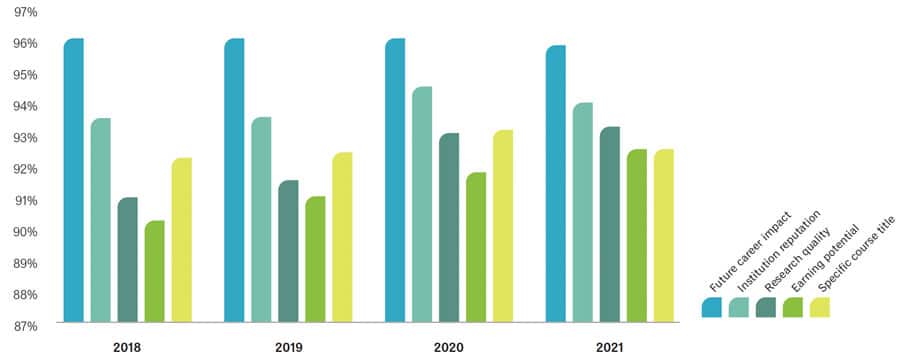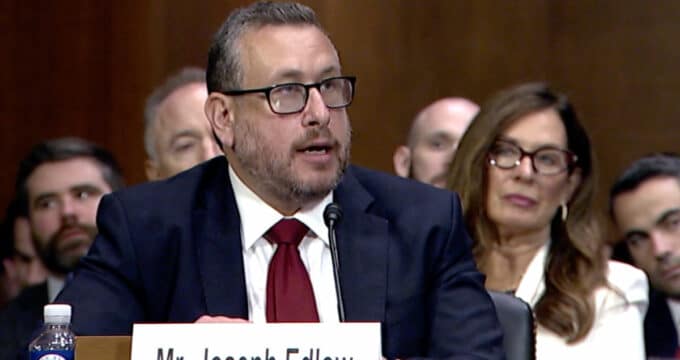Reimagining career services for international students
- Universities face pressure to show they provide students with the education, skills, and connections needed to secure good first jobs
- This special feature from our annual magazine highlights some innovative practice in this increasingly important area of student services
The following feature is excerpted from the 2022 edition of ICEF Insights magazine and is reprinted here with permission. The entire issue of the magazine is available to download for free at icef.com/insights.
Above all, international students expect their degree to lead them to a desirable job when they graduate. But research shows that most of them aren’t turning to traditional career services departments at their institutions. This reality leaves educators with a choice: evolve their thinking about career services or risk the possibility that graduates will be disappointed and blame their alma matter for not doing enough to prepare them for the real world of work.
Increasingly, institutions are choosing the first option: a total rethink of career services.
The need to evolve
Tribal i-graduate’s 2022 International Student Barometer (ISB) survey – based on feedback from 98,200 students in 12 countries – found that 96% of first-year students chose where to study based primarily on “future career impact.” However, only 66% of final-year students said they were well prepared for their career.
The ISB Report authors write:
“This clearly signals the importance of getting…career guidance and support right; understanding it is more than ‘just’ a careers advice workshop in the last semester is key to this, and institutions should be integrating employability into the DNA of the entire learning experience.”

First jobs matter
A 2021 Inside Higher Ed/College Pulse survey revealed that only 25% of students had used career services in the past 18 months despite the “vast majority” feeling concerned about getting a “meaningful first job” after graduation. It is worth focusing on the word “meaningful” in the survey question. According to Burning Glass Technologies/Strada research, 43% of surveyed US graduates were underemployed – i.e., overqualified – in their first job. Of those graduates, two-thirds remained underemployed five years later. Michelle Weise, a senior executive at Strada Education Network, said, “[This] highlights just how important it is to position graduates well in that first job.”
All of this has implications for recruitment. Graduates who end up disappointed with their career trajectory are also less likely to express satisfaction with their study experience and to recommend their alma matter.
Is the solution to devote more budget and staff to a standalone career services department? Not
necessarily.
A 360-degree approach
A growing number of institutions around the world are now stretching the concept of career services across facilities, programmes, course requirements and composition, faculty training, and community and employer outreach.
For example, at the University of Florida, students taking a geographic information systems course had to research listings for their ideal job and then write a cover letter articulating why they would be perfect for the position. One student submitted her letter not only to her professor but also to her dream employer – the prestigious Smithsonian Institution. The result? An internship.
At Virginia Commonwealth University, students can obtain 18 credits towards graduation by pursuing a minor called Interdisciplinary Career Readiness Skills.
Creating space and atmosphere
According to US News, the University of Denver designed its 23,000 square-foot Burwell Center for Career Achievement “to end the dentist-office vibe of a typical career center: a sterile place students visited only for an appointment.” Students can book the executive lounge for meetings with employers or use a variety of other rooms for networking and consultations with alumni. There’s even a “career closet” that students can borrow clothing from for job interviews!
The building’s architects say their design “encourages flow into and through the building, promoting chance encounters and serendipitous collaborations.” It makes sense: important professional moments often occur simply because we’re in the right place at the right time.
Atmosphere is also top-of-mind at Indiana University, where students attend “Discover” events – which Joe Lovejoy, director of the university’s Walter Center for Career Achievement, says are “intentionally informal conversations about a career community.” He explains:
“You can come in your pajamas. There may be ten students sitting around the table with a pizza in the middle talking to an alum about a career in that area. Discover events provide opportunities for students to start interacting with alumni professionals in low stakes environments where there’s not a job or internship on the table.”
Connecting with employers
Reimagined career services extend beyond the campus, providing students with far more than resume-writing and job-interview skills. Today’s career services often include employer advisory boards and meaningful relationships with employers in the larger community.
At Point Loma Nazarene University, career preparation is woven into every academic major on campus, and the university has extensive linkages with employers. University provost Kerry Fulcher, who has overseen the transformation of career services at the university, says the focus on career prep impresses parents:
“Simply knowing that PLNU has developed recruiting partnerships in which firms in San Diego’s thriving biotech scene will give hiring consideration to our science graduates goes a long way toward reassuring parents that we see our responsibility as extending from core academics to starting careers.”
Institutions that can credibly claim to offer a direct pathway to students’ ideal careers have a powerful recruiting edge they can leverage through graduate employability stats on their website, videos featuring successful alumni, or any other communication with students.
For additional background, please see:
















